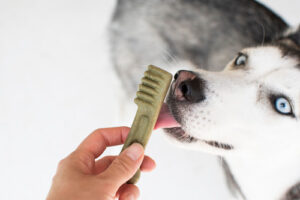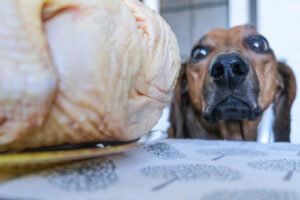Preparing for Breeding
The decision about breeding your dog starts when you first obtain the dog as a puppy. Since there are some advantages to spaying or neutering during the first year of life, it is important to consider your options as early as possible. Start your discussion with your veterinarian during the puppy visits.
Breeding to Improve
The motto of responsible breeders of purebred dogs is “breed to improve”. Study the breed standard, go to dog shows, and meet with other breeders so that you have a good understanding of what features to look for. Breed standards are not just about achieving a certain “look”; for most breeds the “look” is derived from features found in healthy dogs. For example, the gait is very important in many breeds. If a dog has hip dysplasia, the gait may be altered, so having a good gait is one indicator of healthy hips.
Making the Commitment
Good dog breeding requires a commitment to pre-breeding testing, care of the pregnant dam, dealing with possible complications during birth, and an intensive, eight-week period of puppy care. While it might seem that nothing is more natural than allowing dogs to breed, in fact there are many ways in which complications may arise. Breeders need to be emotionally and financially prepared to deal with these issues should they arise.
Breeding Options
There are a variety of ways to breed dogs. Breeding your dog by natural cover means allowing the dogs to do the breeding on their own. This is the easiest and cheapest method of breeding dogs, but is not always possible. Artificial insemination means that the semen is collected from the male, examined, and deposited in the female by a person. Semen can be used fresh, fresh-chilled, or frozen, and it can be deposited in the female by vaginal, trans-cervical or surgical techniques.
Timing Breeding
Timing breeding with care maximizes the conception rate, maximizes the litter size, and allows the most accurate prediction of the whelp date.
The most accurate way to predict the fertile days is to sample the blood of the female during her heat cycle and measure the level of the hormone progesterone.
Following the progesterone changes allows you to know precisely when she ovulates, and therefore when her best breeding times are, and when she is likely to deliver. This allows you to breed using fresh chilled semen, frozen semen, or by giving the pair limited access to one-another. It also allows for accurate calculation of the due date, which is especially important if a caesarian section is expected.
The first blood sample is collected when the female first goes into heat, providing a baseline level. For most females we wait about 4 days, and then start measuring progesterone every other day. The best breeding days are calculated based on the hormone level and the type of insemination that is planned.
Determining Pregnancy
There are several ways to determine whether a female is pregnant, but the best method is by performing an ultrasound at around 4 weeks after the breeding. Ultrasound allows the doctor to confirm pregnancy, check the health of the pups, measure the pups to help determine the whelping date, and to give a rough estimate of the litter size. It is also helpful to take a radiograph about 1 week before the due date. This gives an accurate count of the puppies, and again allows some assessment of puppy health and corroborates the due date.
Preparing for Delivery
About one week before the due date, start taking the rectal temperature of the female 2 – 3 times a day. Always take the temperature at the same times of the day, and after the female has been lying quietly for at least 20 – 30 minutes. Keep a record of these temperatures. The first sign that whelping is about to start is a full degree drop in the rectal temperature as compared to what has been this females normal for that time of day. This drop indicates that labor will start within the next 12 – 24 hours!
Check out our next blog entry for information about birth and care of the young in the first few days of life.




